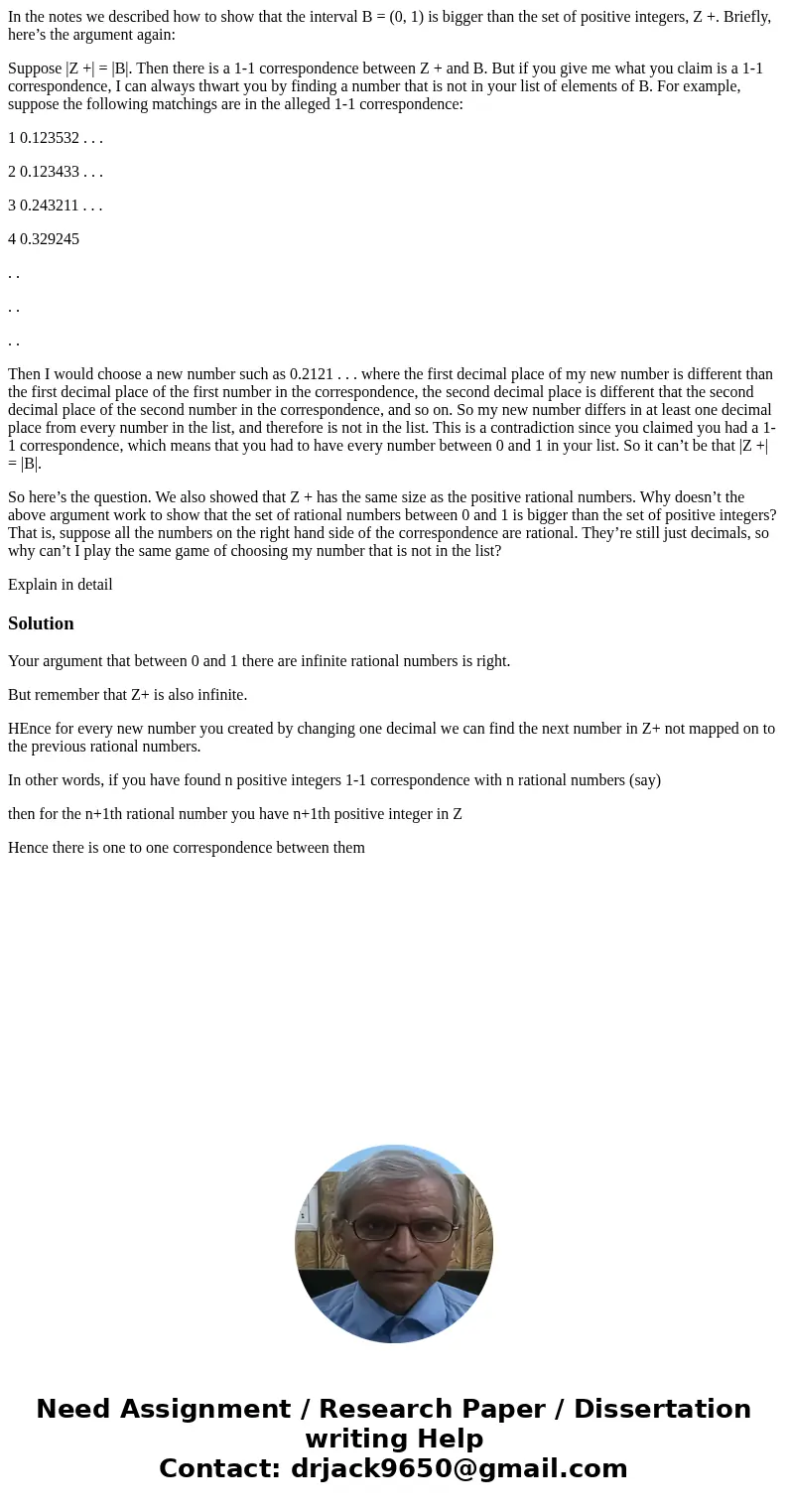In the notes we described how to show that the interval B 0
In the notes we described how to show that the interval B = (0, 1) is bigger than the set of positive integers, Z +. Briefly, here’s the argument again:
Suppose |Z +| = |B|. Then there is a 1-1 correspondence between Z + and B. But if you give me what you claim is a 1-1 correspondence, I can always thwart you by finding a number that is not in your list of elements of B. For example, suppose the following matchings are in the alleged 1-1 correspondence:
1 0.123532 . . .
2 0.123433 . . .
3 0.243211 . . .
4 0.329245
. .
. .
. .
Then I would choose a new number such as 0.2121 . . . where the first decimal place of my new number is different than the first decimal place of the first number in the correspondence, the second decimal place is different that the second decimal place of the second number in the correspondence, and so on. So my new number differs in at least one decimal place from every number in the list, and therefore is not in the list. This is a contradiction since you claimed you had a 1-1 correspondence, which means that you had to have every number between 0 and 1 in your list. So it can’t be that |Z +| = |B|.
So here’s the question. We also showed that Z + has the same size as the positive rational numbers. Why doesn’t the above argument work to show that the set of rational numbers between 0 and 1 is bigger than the set of positive integers? That is, suppose all the numbers on the right hand side of the correspondence are rational. They’re still just decimals, so why can’t I play the same game of choosing my number that is not in the list?
Explain in detail
Solution
Your argument that between 0 and 1 there are infinite rational numbers is right.
But remember that Z+ is also infinite.
HEnce for every new number you created by changing one decimal we can find the next number in Z+ not mapped on to the previous rational numbers.
In other words, if you have found n positive integers 1-1 correspondence with n rational numbers (say)
then for the n+1th rational number you have n+1th positive integer in Z
Hence there is one to one correspondence between them

 Homework Sourse
Homework Sourse